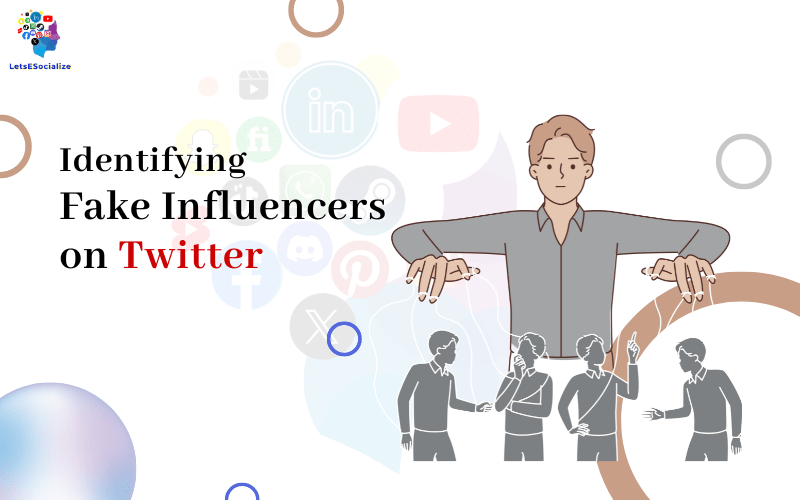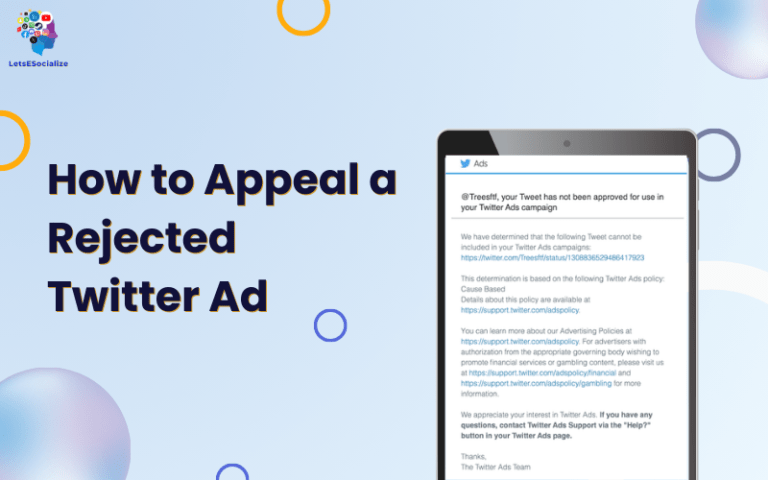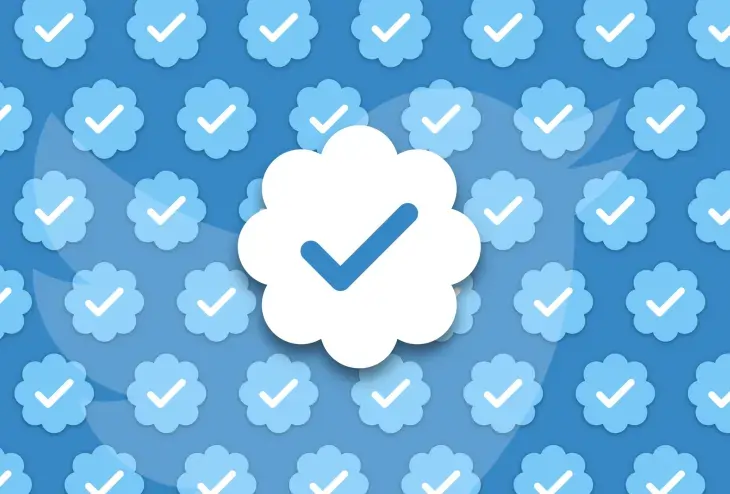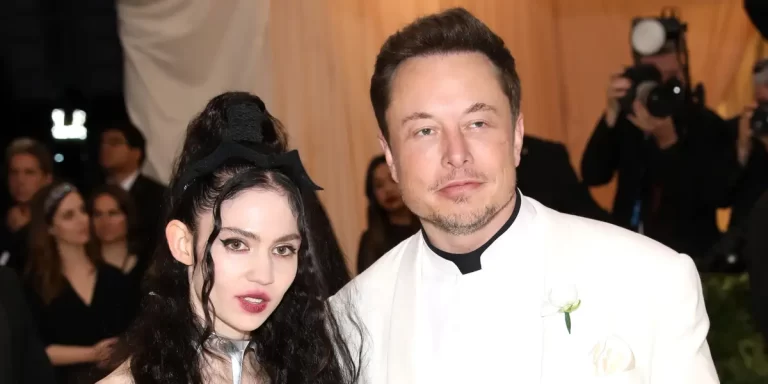Fake influencers are a growing issue on social media, especially on Twitter. These accounts use bots and shady tactics to inflate followings, engagement, and reach. Identifying and avoiding fake influencers is crucial for brands seeking influencer marketing partnerships to ensure campaign dollars are well spent.
This comprehensive guide will unpack the warning signs of fake Twitter influencers and tools to vet accounts properly. Marketers can build partnerships with genuine influencers who offer true value with the proper detection strategies.
Table of Contents
The Risks of Fake Twitter Influencers
While fake influencer accounts may seem harmless, partnering with them can seriously harm a brand’s reputation and marketing budget. Consider these significant risks:
- Inauthentic content – Fake accounts produce low-quality posts, engagement, and followers. This looks obviously inauthentic to authentic audiences.
- Negative associations – Fake influencers often use shady tactics like bots and buying followers. Being associated with them damages brand image.
- Wasted budget – Paying fake influencers yields poor ROI as their inflated reach and engagement are non-existent.
- Missed opportunities – Partnerships with fake accounts mean missing out on collaborating with genuinely impactful influencers.
- Security threats – Fake influencers are risky to share brand access or assets with as they often violate platform terms.
- Algorithm penalties – Too much engagement from fake accounts risks lowering content visibility and search rankings.
Vetting potential partners protects brands from these consequences. But with sophisticated tactics, spotting fake influencers takes diligence.
Why Fake Influencers Proliferate on Twitter
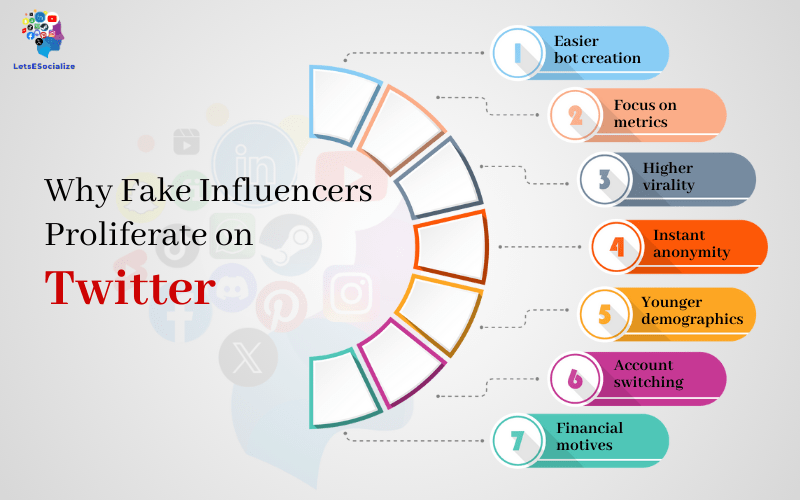
While fake accounts crop up across social media, Twitter is especially vulnerable. Reasons include:
- Easier bot creation – Automated Twitter bots are simple and inexpensive to make at scale.
- Focus on metrics – Followers and retweets matter more on Twitter than other cues like visual polish.
- Higher virality – It’s easier to rapidly inflate popularity through shares and trending hashtags.
- Instant anonymity – Accounts are easier to verify with links to other profiles or identifying info.
- Younger demographics – Teens are likelier to use questionable tactics to boost online clout.
- Account switching – Users can quickly start fresh accounts if old ones get banned.
- Financial motives – Fake accounts try monetizing influence through shady brand deals and ads.
While Twitter works to eliminate fakes, new ones constantly emerge. Brands must be vigilant.
Types of Fake Influencers on Twitter
Not all fake influencer accounts are created equally. Here are the most common categories:
Bot Accounts
These are fully automated profiles controlled by programs, not humans. They auto-generate and share content and then fake engagement through liking, commenting, retweeting, and following other bots. These are the most obviously fake but easy and cheap to produce in mass.
Purchase-Based Accounts
To inflate their popularity, these accounts pay for fake followers, likes, comments, shares, and views. Prices start around $10 for 1,000 followers. This false engagement looks inorganic under scrutiny.
Engagement Pods
Groups of accounts agree to consistently like and comment positively on each other’s content. This mutually boosts engagement only within the pod.
Hacked/Stolen Accounts
Legitimate inactive or compromised accounts get sold and repurposed, often using automation to generate fake engagements. These can appear more natural at first glance.
Comment Bots
Fake accounts target influencer posts with generic positive comments like “Nice!” “Love this shot!” to simulate real engagement. They aim to then convert the following.
Cyber Farms
Sophisticated operators create networks combining automation with cheap overseas human labourers to manage accounts. This provides more advanced interaction.
Combating fake influencers requires recognizing these tactics and digging deeper into suspicious activity patterns.
How to Check If a Twitter Account Is Fake
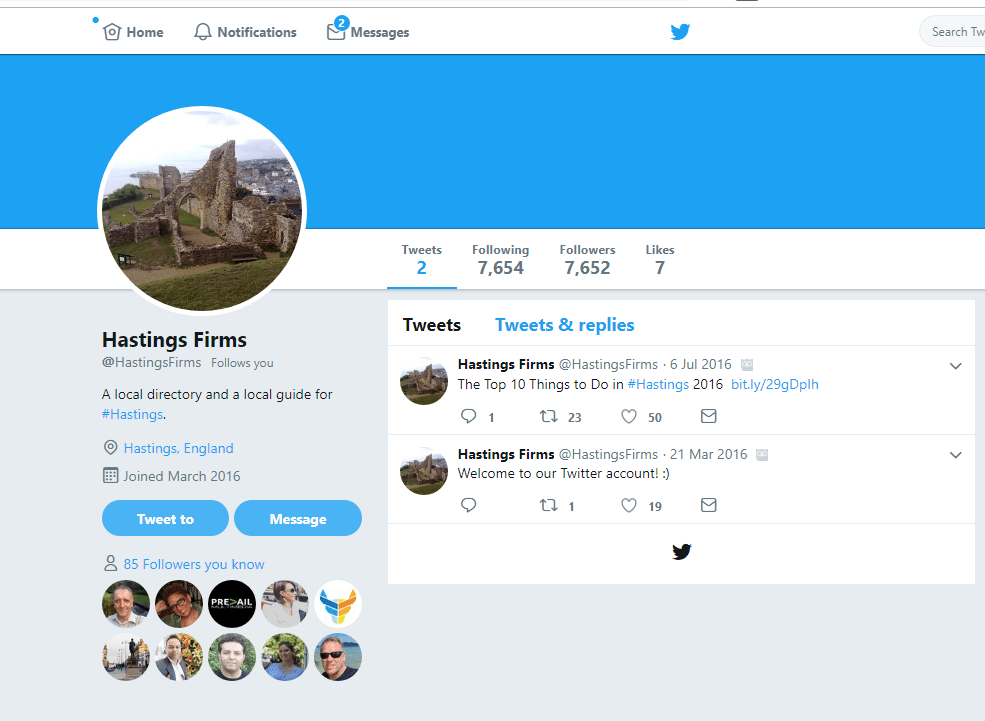
While fakes are getting sneakier, their techniques leave tells. Here are 12 ways to detect fake Twitter influencer accounts:
Analyze Follower Quality
- Inflated numbers: Very high follower counts can raise red flags, especially for niches where that is atypical. Compare to peers.
- Suspicious names: Fake followers often have nonsensical handles without real names.
- Stock photos: Generic profile pictures can indicate bots or purchased accounts.
- No descriptions: Fakes rarely fill out bio info, while real influencers personalize this space.
- No tweets: Accounts with low or low tweet volume likely indicate false followers.
- Suspicious sources: Check Follower Wonk’s “powered by” data to spot bot networks driving followers.
Evaluate Engagement Authenticity
- Comment quality: Generic, overly simple, or off-topic comments likely come from bots or pods.
- Timing: Frequent back-to-back comments at odd hours signal automation.
- Like patterns: Sudden spikes or accounts that only like but don’t comment raise concerns.
- Follower engagement: Having far more followers than likes or comments indicates inflated numbers.
Review Account History
- Recent spikes: Rapid surges in followers, tweets, or engagement can imply bought growth.
- Suspicious handles: Accounts that changed names but kept old bot-like handles merit scrutiny.
- Recycled content: Reposting others’ tweets verbatim points to automation.
- Timing gaps: Long periods of no activity followed suddenly by frequent posts hint at automation being turned on.
Use Validation Tools
- Botcheck.Me: Estimates fake follower percentage based on audit techniques.
- Followerwonk: Analyzes follower accounts for quality and spam signals.
- Hypeauditor: Full audit of account quality and potential fraud.
Combining manual checks with validation tools provides the most thorough results. Consistent patterns of inauthenticity indicate likely fake accounts to avoid.
Expert Tips for Vetting Twitter Influencers
We asked industry experts for their top fake influencer detection advice:
Focus on engagement
“Don’t get distracted just by followers. Analyze likes, comments, click rates, and watch time to gauge real interest.” – Alex Fox, Zipkick.
Do manual profile checks
“Even with tools, take the time to personally click through to an account’s posts and followers to look for red flags.” – Amaury Vu, Miss Influencer.
Research their history
“Google influencers to turn up any past shady behavior or banned accounts that should rule them out.” – Michael Del Gigante, The Media Troop.
Ask for analytics access
“Have influencers share readership stats, demographic data, and campaign performance metrics to validate reach.” – Amanda Todorovich, A&A.
Require multi-channel presence
“Legit fashion influencers should have solid sites and presences across major platforms, not just Twitter.” – Caitlin Patton, Create & Cultivate
Talk to them directly
“Have a real conversation to assess their personality. Bots can’t replicate that human connection.” – Mackenzie Keegan, HYPR.
Vetting thoroughly protects brand reputation and campaign performance.
Signs of Fake Engagement to Watch For
Beyond the account itself, these engagement patterns indicate likely inauthentic activity:
- Promotions receiving way more likes or retweets compared to normal non-promotional content
- Highly similar comments or specific phrases repeating across accounts
- Accounts repeatedly liking and commenting solely on giveaways or contests
- Lots of generic replies like “Thanks!” that don’t specifically reference the content
- Extremely rapid responses within seconds or minutes of posting
- Significant jumps or drops in engagement without a clear cause
Scrutinizing when and how accounts engage takes detection beyond just metrics. The human touch exposes subtle fakes.
Should You Work With Twitter Influencers Who Buy Followers or Likes?
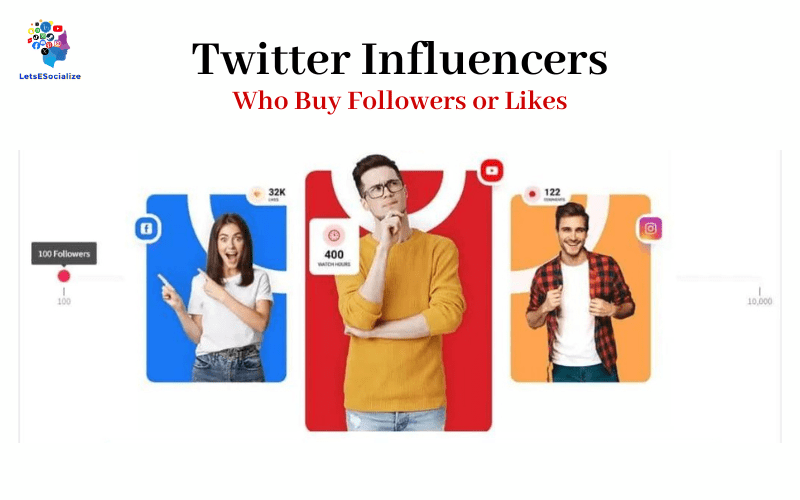
Some influencers transparently pay to boost followers or likes, believing it helps them get discovered. While not outright fake, this controversial practice still raises concerns:
Pros
- Can help kickstart growth for a new account
- Metrics still help surface content in algorithms
- Doesn’t always guarantee low engagement quality
Cons
- Violates Twitter terms of service
- Raises questions on their authenticity
- Makes their influence metrics less meaningful
- Still somewhat inflates reach
Considerations
- Do they fully disclose if/when followers or engagement are bought?
- Are they upfront if asked directly about purchasing followers?
- What % of activity seems authentic vs. fake?
- How do their content and engagement compare to competitors?
There’s no black-and-white answer. Brands must weigh the risks and benefits of the specific situation. Being transparent is critical.
Twitter’s Efforts Against Fake Influencers
Twitter employs a mix of policy, technology, and human review to combat fake activity:
- Strict terms prohibiting buying engagement, bots, coordinated manipulation to inflate impact, etc. Violations can result in account suspension.
- Machine learning models that detect and remove millions of suspicious spam accounts daily. Updates aim to stay ahead of new fake tactics.
- Partnerships with third-party vendors providing follower audit services to brands like Twitter Audit and HypeAuditor.
- Rolled out prompts on retweets and likes, warning users to reconsider spreading potential misinformation or unverified accounts.
- Experimenting with labels like “This account may post automated content” to alert users about potential fake influencers.
- Launched a Consumer Report option allowing users to flag concerning activity like spam or fake engagements.
There are limitations, though. Advanced fakes can still slip through, while some legitimate influencers need to be correctly flagged. Manual checks remain essential.
Signs Twitter’s Algorithm May Be Demoting Fake Influencers
While Twitter provides limited public visibility into how its ranking algorithm works, possible signals of suppression include:
- Sudden unexplained drops in tweet impressions and profile visits.
- Follower growth is slowing despite increased follow attempts.
- Smaller accounts with genuine engagement outrank the influencer.
- Posts frequently need to trend despite using hashtags and timing best practices.
- Being omitted from relevant search results despite keywords in bio and tweets.
- Tweet replies and @ mentions are receiving low visibility and responses.
This could indicate the algorithm has classified the account as untrustworthy. But other factors like competition and stale content can also play a role.
Should Brands Work with Micro or Nano Influencers on Twitter?
So-called “micro” and “nano” influencers with more minor, highly engaged audiences on Twitter present exciting brand partnership opportunities.
Potential Pros
- Highly engaged communities in specialized niches
- Viewed as more accessible and authentic
- Offer tailored targeting capabilities
- Lower cost than major influencers
- More open to creative collaborations
Potential Cons
- Limited reach compared to macro-influencers
- Nano influencers, mainly unproven
- Time intensive to identify and vet smaller accounts
- Difficult to scale campaigns broadly
- Light content moderation for brand safety
Key Considerations
- Follower count minimums based on campaign goals
- Vetting engagement authenticity
- Ensuring sufficient content volume
- Negotiating fair compensation
Micro-influencers warrant consideration for thoughtful campaigns, but extensive vetting remains critical before investing.
Tools to Identify Fake Twitter Influencers
Specialized tools automate analyzing Twitter accounts to uncover fakes:
HypeAuditor– Full audit of followers, engagement, growth, and post authenticity.
Social Blade– Tracks sudden spikes in growth and engagement that can signal automation.
TwitterAudit– Scans followers and assigns a spam score.
Bot Sentinel– Detects accounts using aggression, misinformation, and bullying.
Followerwonk– Breaks down follower demographics and social connections.
SparkToro– Assesses follower quality and typical engagement rates for the niche.
FakeCheck– Checks username info, tweets, and followers for red flags.
IGAudit– Audits followers and engagement on connected Instagram accounts, too.
Multiple tools used together provide layered insights before partnering with any influencer.
Maintaining Strict Partnership Standards
Beyond vetting individuals, brands need comprehensive fake influencer prevention policies:
- Detail clear protocol in influencer agreements covering expected account quality standards and violation penalties.
- Conduct audits on contracted influencers periodically to ensure ongoing compliance.
- Cap instalments as % of total compensation tied to ongoing audit results.
- Train staff on vetting techniques and tools to optimize selection.
- Share guidance with influencers on best practices and company policies around fake growth tactics.
- Encourage transparency for influencers to disclose any past bought activity and eliminate fakes.
- Plan lengthy vetting time into campaign schedules to research options thoroughly.
- Avoid vanity metrics as primary partnership criteria. Judge based on niche fit and engagement.
Ongoing diligence, not one-time checks, is key to avoiding bad partnerships that damage brands.
Fake Influencer Case Studies
Bad Example
Social Sweethearts was an influencer agency offering Twitter brand partnerships. However, an investigation found they had faked many of their represented influencers using stock photos and bots to generate fake followers and engagement. This provided misleading metrics that brands based sponsorships on. Multiple brands terminated contracts once discovered.
Takeaway: Thoroughly research agencies and individual influencer accounts when sponsoring Twitter campaigns.
Good Example
StyleChic is a fashion brand requiring influencers to submit to an account audit using Followerwonk before any partnerships. One popular style blogger failed this check. When asked, the influencer admitted to purchasing followers early on to boost their perceived authority but had stopped. They provided additional examples of campaign success and offered to remove the fake followers. StyleChic ultimately partnered with them based on this transparency.
Takeaway: Being open about past growth tactics and improving practices can still build trust for influencers with brands.
Proactive detection by brands minimizes terrible partnerships.
A Checklist for Influencer Account Audits
When auditing Twitter influencer accounts, use this checklist:
- [ ] Review follower count size and growth patterns over time
- [ ] Check follower profile pictures, bios, tweet activity
- [ ] Analyze engagement levels across different tweet types
- [ ] Scan for suspicious spikes or drops in activity
- [ ] Read tweet content for authenticity
- [ ] Identify how followers were obtained
- [ ] Verify linked website and other social media
- [ ] Search their online reputation
- [ ] Use Twitter Audit or Botcheck to estimate fake %
- [ ] Check engagement automation or pods
- [ ] Compare against competitors
- [ ] Require them to explain any red flags
- [ ] Consult validation tools for second opinions
Following this structured process minimizes overlooking warning signs of fake accounts.
Key Takeaways for Identifying Fake Twitter Influencers
- Conducting influencer vetting protects brand reputation and optimizes campaign ROI by avoiding shady partners.
- Look beyond vanity metrics alone to analyze audience quality, content, and engagement patterns for signs of fakery.
- Leverage Twitter’s reporting features plus third-party auditing tools for added verification.
- Consider micro-influencers, but vet extensively, as their engagement may be inflated too.
- Require transparency from influencers admitting to any past questionable growth tactics.
- Monitor influencers even post-partnership to ensure ongoing compliance with standards.
- Document detailed policies and protocols in influencer agreements to maintain integrity.
Fake influencers undermine the power of social media marketing. But brands who invest time distinguishing authentic engagement and advocates can reap huge benefits from influencer collaborations on Twitter.

